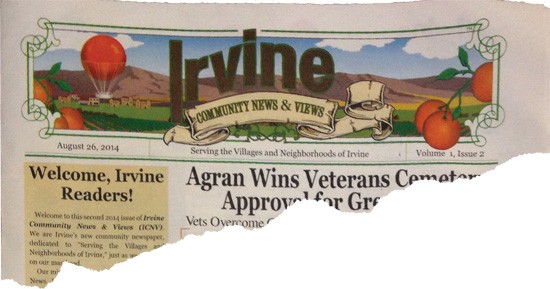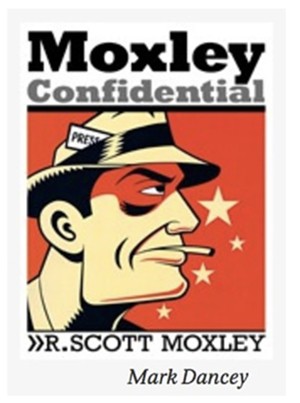
Having collected $7.23 million to do public relations for a government park that may never be fully built because of wasted spending, Newport Beach consultant Arnold Forde made clear at the outset of an Aug. 5 deposition that he is contemptuous of questions about his windfall.
The recipient of no-bid contracts for a decade because of his personal ties to Irvine political boss Larry Agran, Forde advised Anthony R. Taylor, the city council-hired attorney investigating corruption at the Orange County Great Park project, that he’s the target of “a witch hunt.”
Knowing his probe has already produced evidence of malfeasance, incompetence, political shenanigans and worse, Taylor asked Forde to explain.
“Well, it’s simple,” replied the 78-year-old co-owner of Forde & Mollrich. “For years, we were doing a great job [at the Great Park], everything was working correctly, and then a new group got in.”
Forde is correct that a new group–Republicans Christina Shea, Steven Choi and Jeff Lalloway–ended the 12-year reign of Agran’s secrecy-obsessed political machine as a result of the 2012 council elections. But his assertion that all was well until then is ludicrous. Under Agran’s mismanagement, $200 million was spent without construction of a single, major, promised park feature. So much money had been funneled to political operatives, stupid PR stunts or dead-end ideas, it took, for example, more than 2,500 days just to open a couple of youth soccer fields. And who can forget the $125,000 playground that ultimately cost $1.25 million after Agran’s hand-picked consultants submitted pay demands?
Those types of alarming facts drove Shea and the new council majority to hire Taylor, who proved his talent in chasing missing funds after the City of Bell scandal, in which a few bureaucrats paid themselves nearly $7 million in secret wages. In his Great Park probe, the Aleshire & Wynder attorney is also asking the right questions. He wanted to know why the Forde & Mollrich PR contract started at a whopping $50,000 per month in 2005 and, incredibly, doubled by 2009 for a park that still hasn’t opened.
The project “wasn’t functioning well,” Forde answered, contradicting his earlier assertion about how well things were working until the new council majority took over in January 2013 and eliminated his gravy train. Agran and his loyal, robotic allies Beth Krom and Sukhee Kang spent years praising themselves for creating “a model” for future public projects, but behind the scenes, screaming, name-calling, cursing, backstabbing, cronyism and gross incompetence marred the languishing endeavor. Park board members wanted to focus resources on building structures that would form the heart of the project. Meanwhile, Agran–who loves to be tailed by an entourage of fawning note-takers–obsessed on bathrooms, shaded areas, benches, a carousel and operating a giant orange balloon. To dampen tensions, Forde says, he played a part-time “mediator role” worth the $100,000 monthly deposits into his bank account.
“It’s like I tried to herd cats,” he told Taylor. “That’s strategic consulting–that’s what it’s all about, in my opinion.”
But the investigator wasn’t satisfied, pressing the consultant and winning an amended explanation: “The workload increased greatly because there was a lot more complexity to the project.”
Taylor sought examples.
Forde replied, “I don’t remember.”
The investigator then asked to see records to support the claim. Far from unreasonable, the request was based on the PR firm’s contractual obligation to cooperate with city audits. However, Forde’s lawyer from Manatt, Phelps & Phillips in Los Angeles blocked an answer. After a private huddle, the consultant said he’d surrender Great Park records only if ordered by a court, after which he’d turn over “what we have.”
The bizarre concealment–it’s records on a community-park plan, not combat-troop movements–failed to deter Taylor, who also wanted to know if Forde has “any records which would track the amount of profit achieved from Great Park matters.”
Forde said, “No.”
Like the flip-flop about park-management competence, the consultant first used the deposition to portray himself as a genius whose intellectual prowess and commanding presence justified his extraordinary paydays that softened the pain of living in an oceanfront Laguna Beach house. He’d even begun the interview joking he’d thought about wearing a Thor superhero T-shirt. But as Taylor honed in on sensitive topics, Forde transformed into a bumbling, absent-minded, old man. He said he couldn’t remember the identities of other recent firm clients; didn’t know one way or the other if he’d hired assistants for the project; and possessed at least partial amnesia about whether he mixed Great Park PR operations with Agran’s re-election campaigns–a big no-no. He even professed he’d forgotten his own age.
See? Please help Forde. He’s fallen on a bed of 72,300 $100 bills, and he can’t get up.
I don’t know if Taylor believed the portrayal, but he continued to ask such questions as: Why did city and park staff consider him Agran’s scary enforcer?
Replied Forde, “I guess my magnetic personality and my skill.”

His most startling, inadvertent admission during the deposition involved the emptiness of Agran’s majestic plans for the Great Park, a place the career politician guaranteed would be more impressive than Central Park in Manhattan and Balboa Park in San Diego. Forde says he loaded “everything” into those initial park concepts as a way to entice voters to block development of an international airport on the property in 2002. The move worked, and that campaign tactic supposedly evolved into a legitimate public-policy goal.
Yet, four years later, there still wasn’t a hint of a park because Agran learned the value of a never-ending campaign selling the idea of a park in the heart of congested Orange County as the primary tool for his re-election bids. Beginning in 2006, Ken Smith’s $47 million publicly financed conceptual drawings served as the key prop showcasing spectacular, if unrealistic, man-made canyons and waterfalls; lengthy, Paris-like canals; sporting and university teaching facilities; and stately Smithsonian-esque museums.
Week after week, month after month, year after year, nothing meaningful was done–except, noticeably, Forde’s beautiful, glossy mailers hailing Agran’s park promises to residents in the months before city elections. By selling the illusion and running decoy Republican candidates (hello, Katherine Daigle) to dilute his opposition’s votes, the Agran machine kept power in four consecutive elections–more than enough time to empty the park treasury.
I’ve known about the trickery for years and repeatedly published observations, earning ridicule from Agran’s tiny but vocal support group. But there was Forde sitting with Taylor a few weeks ago. The consultant–who pocketed a fortune by selling the notion that a vote for Agran assured construction of the promised park–made a remarkable admission.
“I liked [Smith’s] design,” he stated before acknowledging he never saw convincing evidence the park proposal was viable. Years of public assurances otherwise by Agran, Krom and Kang were, after all, nothing but cheap, manipulative campaign slogans.
“I don’t know,” Forde confessed, “if [the park] could be built or not.”
On Nov. 4, the 69-year-old Agran hopes residents return him and Forde to power over Irvine and the Great Park property. His campaign is claiming he’s for park-spending “transparency.” He’s also publishing fake community newspapers with ads urging voters to support him and two members of his slate, Melissa Fox and Mary Ann Gaido. There’s no mention of three counter-candidates who actually support park accountability: Choi, Lalloway and Lynn Schott.

CNN-featured investigative reporter R. Scott Moxley has won Journalist of the Year honors at the Los Angeles Press Club; been named Distinguished Journalist of the Year by the LA Society of Professional Journalists; obtained one of the last exclusive prison interviews with Charles Manson disciple Susan Atkins; won inclusion in Jeffrey Toobin’s The Best American Crime Reporting for his coverage of a white supremacist’s senseless murder of a beloved Vietnamese refugee; launched multi-year probes that resulted in the FBI arrests and convictions of the top three ranking members of the Orange County Sheriff’s Department; and gained praise from New York Times Magazine writers for his “herculean job” exposing entrenched Southern California law enforcement corruption.

